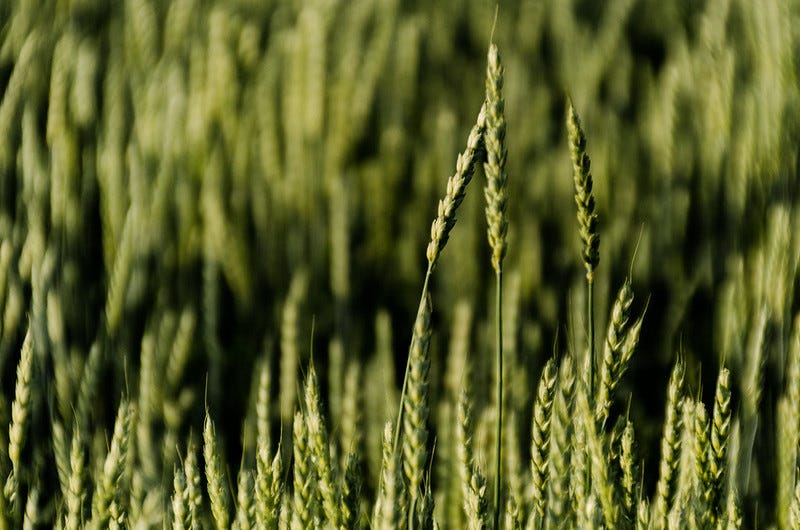Unveiling the Role of Plasmodesmata in Plant Virus Dynamics
Written on
Chapter 1: Understanding Plasmodesmata
Plasmodesmata (PD), the singular form being plasmodesma, are intricate channels that serve as conduits between plant cells. These specialized structures enable the passage of large molecules—including proteins, carbohydrates, ions, and various RNA types—between neighboring cells. Their discovery dates back to 1885 by Edward Tangl, who confirmed their existence in higher plants, and they have since been recognized in all green plants. Characterized as communication pathways, plasmodesmata create elongated, cylindrical connections that penetrate the cell walls, allowing intercellular interactions.

Image source: Sevie Kenyon/Flicker
Structure of Plasmodesmata
Plasmodesmata consist of aqueous, cylindrical structures that cross the cell wall, forming an extensive network throughout the plant. With a diameter of roughly 40 nm, these channels feature three distinct layers: the plasma membrane, the cytoplasmic sleeve, and a desmotubule—a tubular extension of the endoplasmic reticulum that connects adjacent cells. The desmotubule contains electron-dense particles measuring 2.5 nm in diameter.
Transport Mechanisms in Plants
Plants have developed specific systems for the movement of water, nutrients, and signals. For the transportation of essential resources, vascular tissues like xylem and phloem are employed for long-distance transfer. Conversely, short-range transport utilizes the apoplastic and symplastic pathways, with plasmodesmata playing a crucial role in the latter by facilitating intercellular communication.
Prior research indicated that plasmodesmata were static and nonselective; however, recent advancements in the field reveal that these structures are highly selective channels capable of regulating molecular flow, known as "gating." This interconnected cytoplasmic network enables targeted molecule transport directly between neighboring cells, bypassing the constraints imposed by rigid cell walls.
Chapter 2: Pathogen Exploitation of Plasmodesmata
Plasmodesmata are essential for plant cell communication, yet they also present an opportunity for pathogens. Microbes, particularly viruses, exploit these channels to infiltrate plant systems and propagate infections. Fungal pathogens, especially hemibiotrophic fungi, similarly utilize plasmodesmata to spread within plant hosts.
Research indicates that these pathogens can manipulate plasmodesmata to benefit their own spread while keeping the plant’s defense mechanisms at bay. Plant viruses, being non-living entities reliant on host cells, employ these tactics to ensure their survival and multiplication.
Plant Virus Mechanisms in Plasmodesmata Interactions
Plant viruses act as obligatory parasites, depending entirely on host cells for replication. Upon entering a plant via vectors like insects, their primary goal is to infect and hijack the host's metabolic processes. For a virus to migrate from an infected cell to adjacent healthy ones, it must produce specialized proteins known as movement proteins (MPs) that facilitate this transition through plasmodesmata.
Research on viruses such as Tobacco mosaic virus (TMV), Potato virus X (PVX), and Cucumber mosaic virus (CMV) has shown that these movement proteins interact with plasmodesmata and the endoplasmic reticulum, aiding in their spread to neighboring cells. Movement proteins are diverse but serve similar roles: they are encoded by the virus, interact with the viral genome, and modify the trafficking capabilities of plasmodesmata, enhancing their permeability for viral movement—a process known as "gating."
The Gating Process
The interaction of plant pathogens with plasmodesmata promotes the trafficking of small molecules and proteins for their advantage, a phenomenon termed gating. Although much research has been conducted on the interactions between viruses like TMV, PVX, and CMV with plasmodesmata, limited knowledge exists on the exact mechanisms through which viruses gate these channels.
Some studies suggest that specific movement proteins are capable of altering plasmodesmata structure to facilitate viral spread, while others play no role in this process. One prominent model proposed by Epel in 2009 posits that viruses gate plasmodesmata by modifying pore structures, facilitated by the breakdown of callose—a polysaccharide that temporarily reinforces cell walls under stress. The degradation of callose increases the size of plasmodesmata pores, promoting the trafficking of viral molecules.
Key Takeaways
Plant viruses navigate between cells by engaging with cellular mechanisms that regulate plasmodesmata pore sizes, allowing them to spread effectively within the plant host.
References: